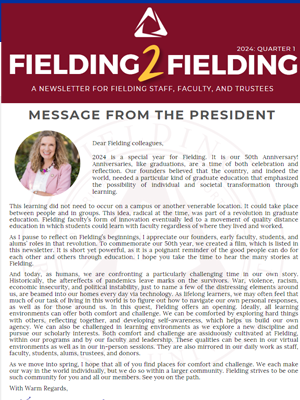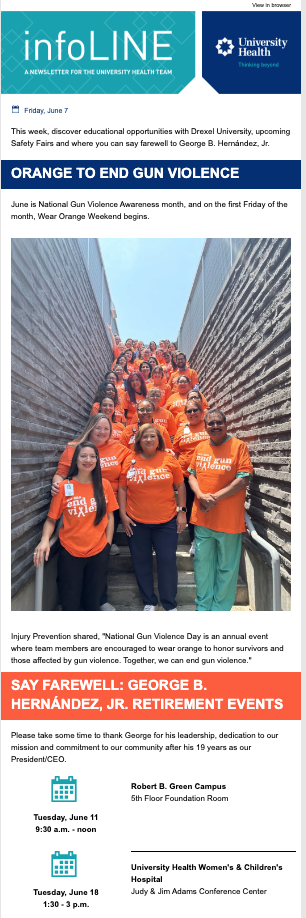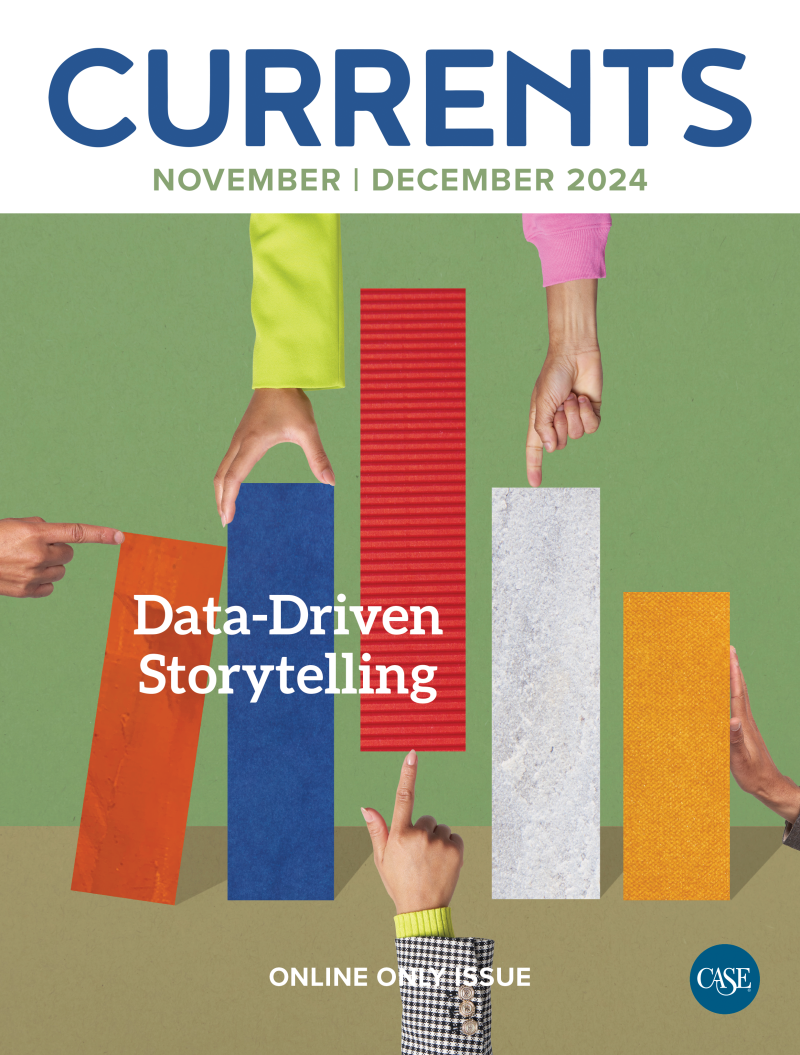Voices: Get To the Point!
In CASE's College and University Editors online community, the topic of internal newsletters recently came up. Here, some community members share the successes they've had with faculty and staff newsletters—including how to present content most effectively.
Have clear organization and leverage evergreen content.

“The key to a good faculty/staff newsletter is clear organization with well-defined sections and incorporating infographics and engaging images to make the content visually appealing. We’re revising our approach by creating monthly newsletters for faculty, students, and staff, aiming to leverage content across platforms and tailor it efficiently for each audience. In our case, the newsletter should be regular, timely, and come from the proper authority, such as the university communications email.
We enjoy including sections like 'A Letter from the President,' 'Provost’s Corner,' and 'Staff Council Corner.' My favorite feature in our Fielding2Fielding newsletter is the new employee introduction, with interactive elements like a five-question quiz. My favorite quiz questions are: 'What apps would you never delete from your phone?' and 'What’s your favorite breakfast?' It’s also essential to leverage evergreen content from the university’s social media and website to engage audiences across platforms. At the end of the day, showcasing the human element resonates with each of our audiences in various ways.” —Elena Nicklasson, Vice President of University Relations, Fielding Graduate University, Santa Barbara, California, U.S.
Read an issue of Fielding2Fielding.
Short, interesting stories are key.
“Good content is key to a faculty/staff newsletter that’s delivered via email amidst all the other inbox traffic. [In Forum, our Grand Valley State University staff newsletter] we strive to present short, diverse stories that provide an informative look at our campus. The profiles spread goodwill and build community. News stories are presented in a condensed manner, [inspiring readers to] give important administrative messages a second look.”—Michele Coffill, Editorial Director, University Communications, Grand Valley State University, Grand Rapids, Michigan, U.S.
Be concise.
“The key to a good employee newsletter is to make items as concise as possible, without sounding curt. As you know, faculty and staff members at colleges and universities don’t have a lot of free time, so get to the point! Other things to consider: Have a simple layout with visual consistency; link to your school’s website rather than external sources, if possible; and keep an archive of past issues.” —Chuck Gordon, Managing Editor of Marketing and Communications, Wingate University, North Carolina, U.S.

Read an issue of Wingate's newsletter.
Know your readers.
“You should really know your audience and follow analytics closely to see what your readers want over time. What engages them? If it is, say, a blurb about a coworker doing an awesome job, you can use that to raise visibility about that person’s department and what the department does as a whole.
Different audiences might receive similar information that is presented in differing ways. For example, [in our newsletter, infoLINE] when we shared] the news that mosquitoes tested positive for West Nile, we used a more news-you-can-use [approach] in layperson’s language and an infographic for our main staff, but in the clinicians’ newsletter we had a more scientific, symptoms-to-be-alert-to-in-your-patients take.”—Sherrie Voss Matthews, Director of Internal Communications, University Health, San Antonio, Texas, U.S.
Read more in the CUE community.
Do you have a staff/faculty newsletter you’d like to share? A follow-up question for one of these communicators? Connect with other CASE members in our online CASE Communities.
Tags
Article appears in:

November - December 2024
DIGITAL-ONLY ISSUE - Using data, visualizations, and infographics to reach donors and alumni.
Plus communications strategies for corporate relations professionals, the story behind one university's new alumni center, a look inside CASE's new Latin America benchmarking project, and more.